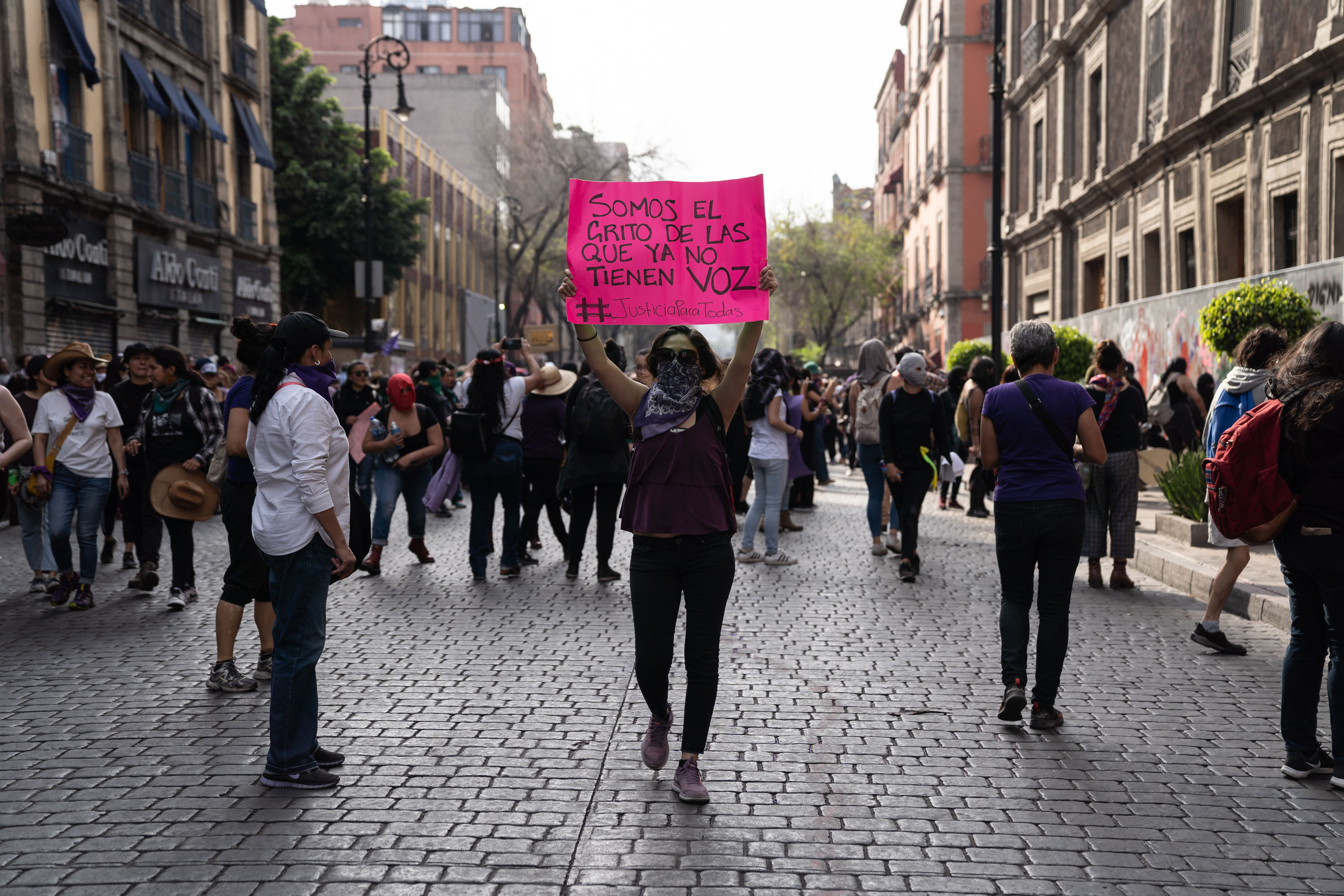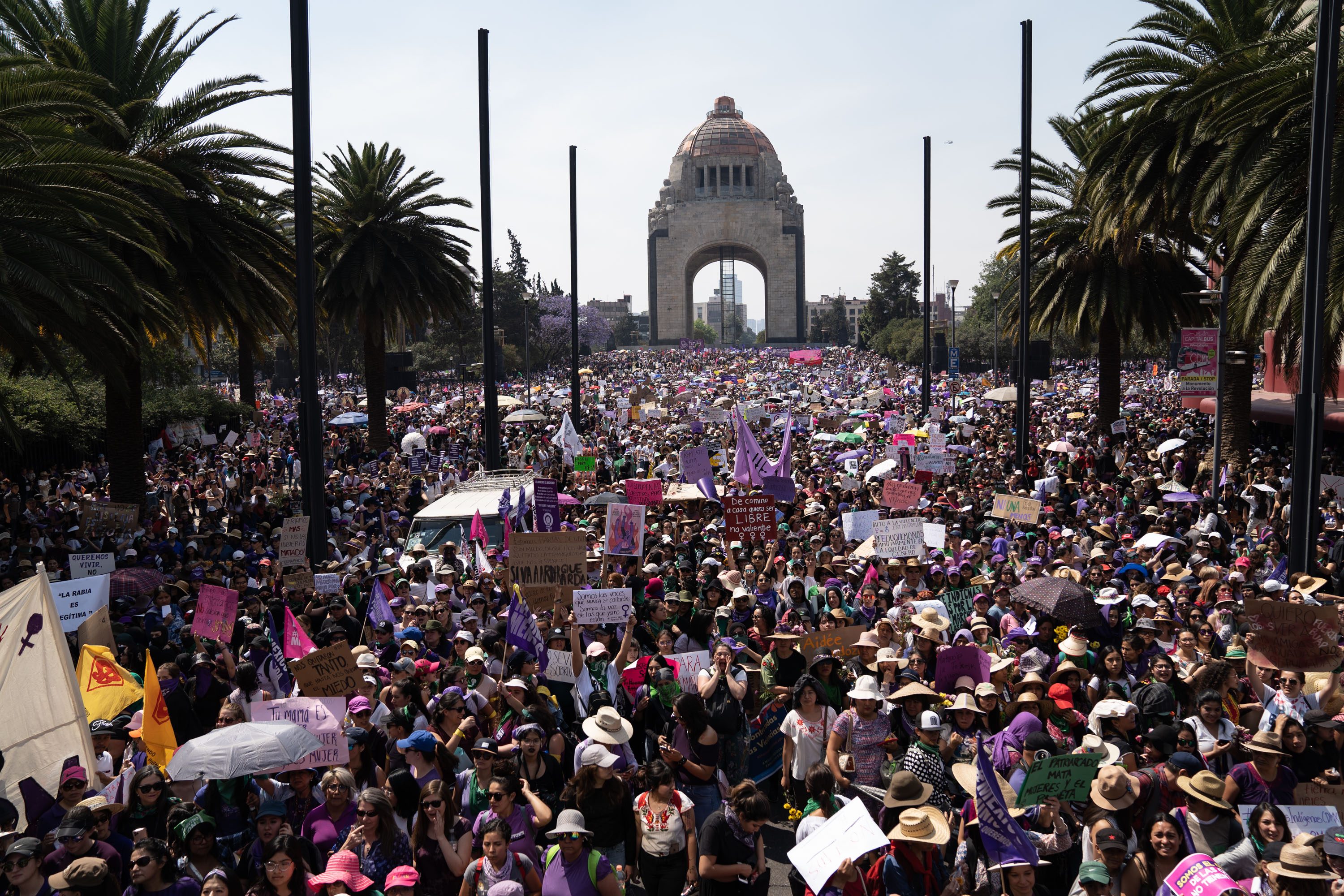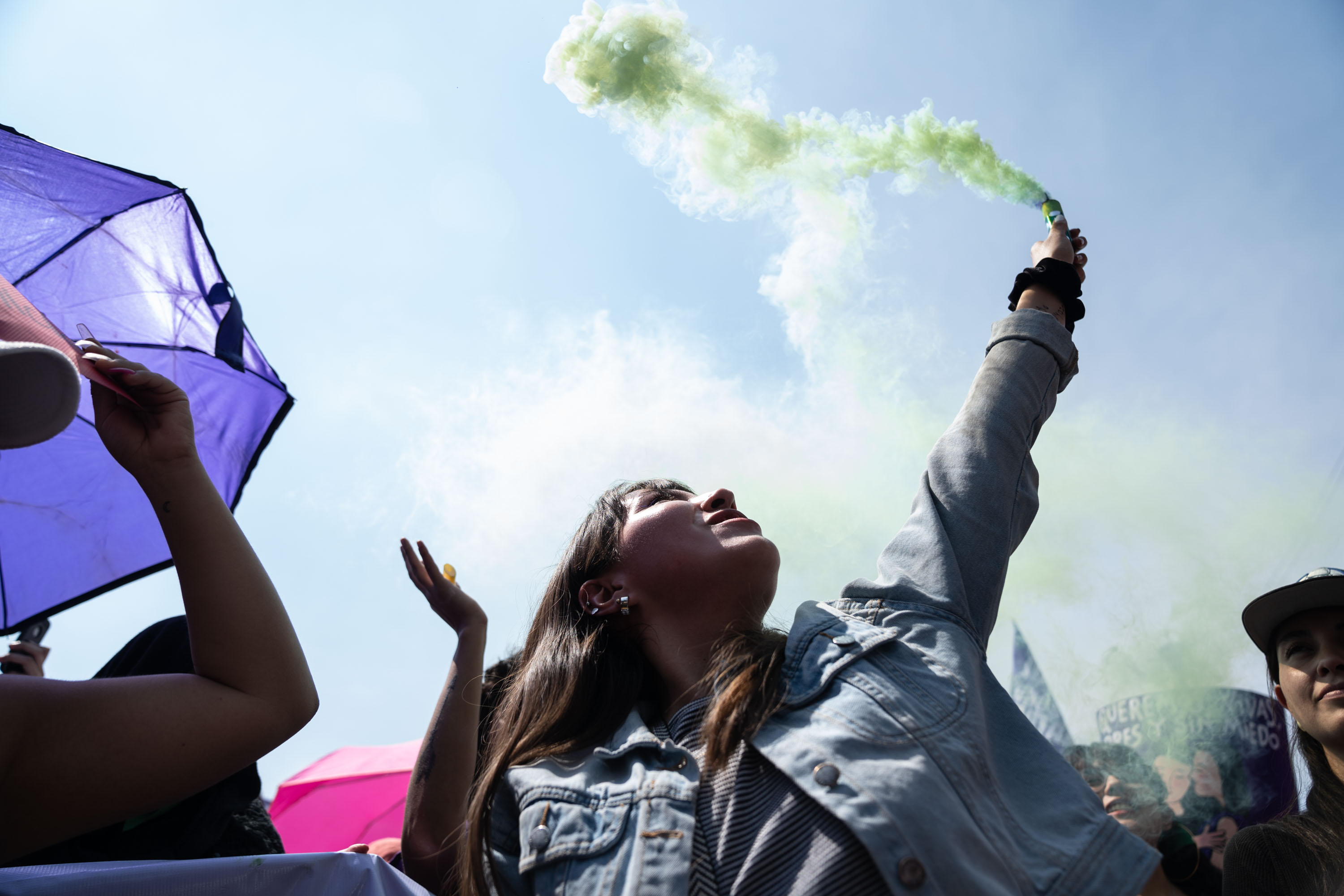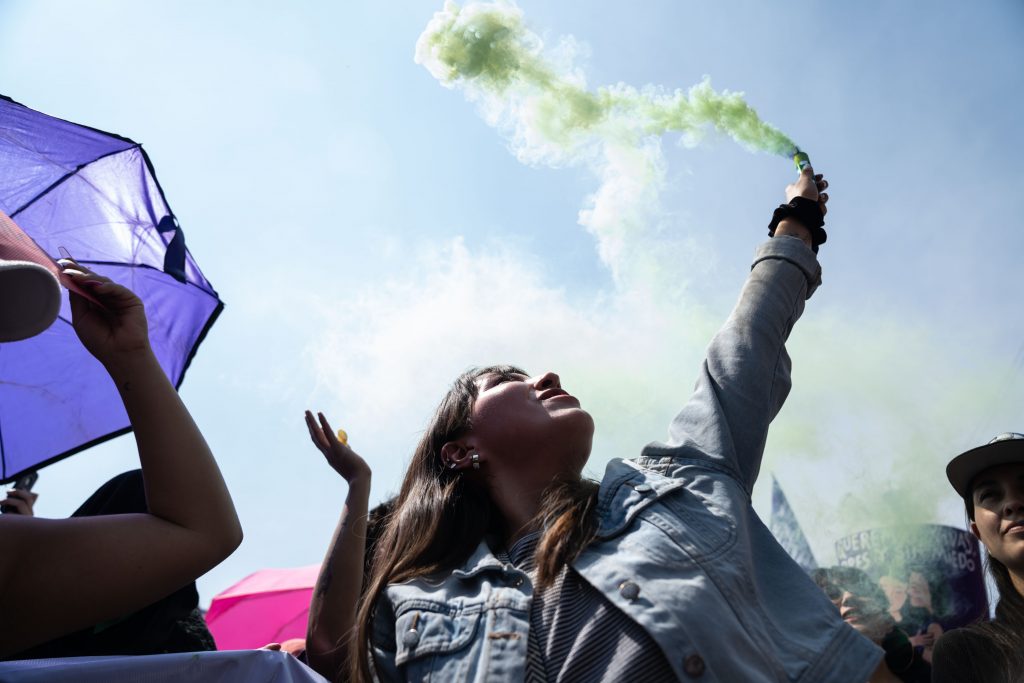Over 1,000 women were killed in Mexico last year, according to official government reports. Less than three months into 2020, that statistic amounts to almost 100. Though the issue of violence against women has been prevalent for decades, there has been a particularly alarming rise in femicides over the last five years. Stories like that of Ingrid Escamilla, 7-year-old Fátima Cecilia Aldriguett Antón and Isabel Cabanillas are amongst this nascent year’s tragic losses. Each story is stark in cruelty and a special blow to the gut when coupled with the reality that every woman on that list has one of her own.
“Ni una más,” (Not one more [femincide]) and “Ni una menos” (Not one less [taken from us]) have become signature chants and, more than that, the ultimate end goal for the women of Mexico and countries like Argentina, Chile, Peru, Guatemala and more who have mobilized around the issue.
On Sunday, March 8—International Women’s Day—over 80,000 women reportedly flocked to the streets of CDMX to call for the end of gender-based violence. They marched from Monumento a la Revolución to Plaza de la Constitución.
“This is a cry of conscience for our society. If we don’t raise our voices, when will they hear us?” said Itzel Zurita, a 32-year-old protester in Mexico City, to The Washington Post.
Protest signs and marked walls had pointed messages like “We aren’t numbers, we’re lives,” “Living with fear is not living,” and “For those who are no longer there, for those who are and for those who are to come.”

#8M—the name given to this movement in 2018—and #HuelaInternacionalDeMujeres were a couple of the primary hashtags used to bring attention to the manifestations and rally more people. Dozens of organizations like Asamblea Feminista Autónoma e Independiente de México (AFAI) and Alianza De Mujeres De Diversos Colores contributed to spreading the word and organizing women of all ages and backgrounds en masse. It took months to plan.
An older doña who set camp on a city street sidewalk where thousands marched past her folding chair, held a sign that read “I can’t march but I support because I want my daughters and granddaughters to walk without fear. I want them ALIVE.”
Smaller protests also took place in Veracruz, Baja California and more.
Their demand, and that of so many other women in Latin America, is simple yet layered: Freedom and safety for all women. Yes, zero femicides—but also zero tolerance for sexism, inequality, abuse, etc.
On Monday, March 9, women across the North American country will opt out of any kind of work to show men what a day without women would look like. The reported estimated impact of #UnDíaSinNosotras amounts to $1.8 million in losses.

In the past, President Andrés Manuel López Obrador has addressed the issue with vague language and little to no action.
This, activists are hoping, will be impossible to ignore.
“March 8th is not the last day of the feminist strike,” Huelga Feminista wrote. “We will keep on fighting until we get the world that we want!”




